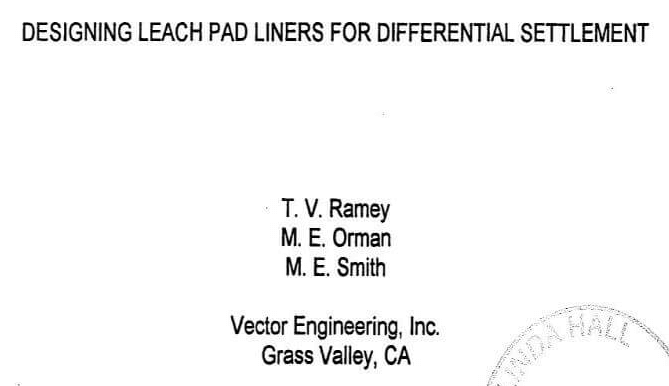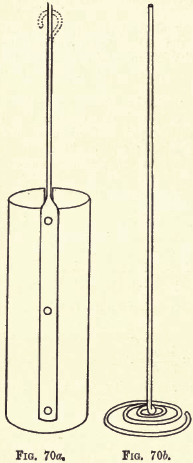Purple of Cassius Preparation

Purple of Cassius was discovered by Cassius of Leyden in 1683. It contains gold and oxide of tin, and is used to colour glass and glazes, various shades of violet, red and purple being thus obtainable. Several methods of preparation are used, of which the following is that employed at the factory at Sevres: Half […]
What Causes Leach Pad Liner Differential Settlement

Differential settlement of a leach pad liner is typically thought of being caused by consolidation of soils due to the load created by the heap materials over a soft clay soil and/or elastic compression of the subgrade soils due to this load. In these cases, the loads at the toe of the heap are essentially […]
Analysis by Neutralisation

The measurement of the strength of an acid by the quantity of alkali required to neutralise it (termed acidimetry), and the measurement of the strength of an alkali by the quantity of acid required to neutralise it (termed alkalimetry), will be considered in this chapter. The student is asked to determine volumetrically: THE ESTIMATION OF […]
ASSAYING CHLORINE BY PRECIPITATION WITH SILVER NITRATE
When we consider the ordinary gravimetric precipitations, it is evident that if the exact strength (as regards precipitation) of the precipitating reagent Apparatus, Reagents.—Apparatus as usual. For the preparation of the standard solution, pure silver nitrate (preferably triple crystallized) is required. For practice in this analysis the student may first estimate the chlorine in pure […]
Colorimetric Analysis
This method of analysis is generally applied to the determination of small percentages of an element or compound, and in this chapter the following will be considered: (a) The Colorimetric Estimation of Copper. (b) The Colorimetric Estimation of Carbon in Steel. And though not coming under this head, (c) The Volumetric Estimation of Copper by […]
Electrolytic Analysis

The theory of electrolysis cannot be taken up at any length here, and the student desiring fuller information on this subject is referred to the works of Ostwald, Nernst, James Walker, and others. Briefly, it may be stated that on passing a current of electricity through a solution of a salt in water the salt […]
Assaying Lead Ores

To determine by fire-assay the percentage of lead in: (a) The sulphide. Galena (PbS). (b) An oxidised ore containing Cerussite (PbCO3), Anglesite (PbSO4), etc. (a) The sulphide, Galena Methods employed. Regarding the methods employed authorities vary widely ; here two methods are given for sulphide ores, the Soda and Argol (or Nail) method, and the Cyanide method. The […]
What the Effect of Varying Furnace Temperatures

The Wind or Melting Furnace Principle.—According to the equation 2PbO + C = Pb2 + CO2, 446 grains of litharge fused with excess of charcoal should yield 414 grains of metallic lead. If the temperature be too high, PbO volatilises, and this loss, which varies with the temperature and air present, can be checked by […]
ESTIMATE SILVER IN COINAGE

For practice, a convenient material to operate on is an English silver coin, which contains 925 parts of silver to 75 parts of copper by weight. The student, therefore, knows the composition of the alloy. When dealing with alloys of unknown composition the process is more complicated (see note appended). Method.—A given weight of […]
Fire Assay of Copper

This assay is presented here, not with the purpose of giving the student an accurate and handy means of estimating copper in its ores, but to give him some practice in manipulation, which, on the small scale, somewhat resembles metallurgical methods. In all modern mining fields the fire-assay of copper is replaced by the Volumetric […]
